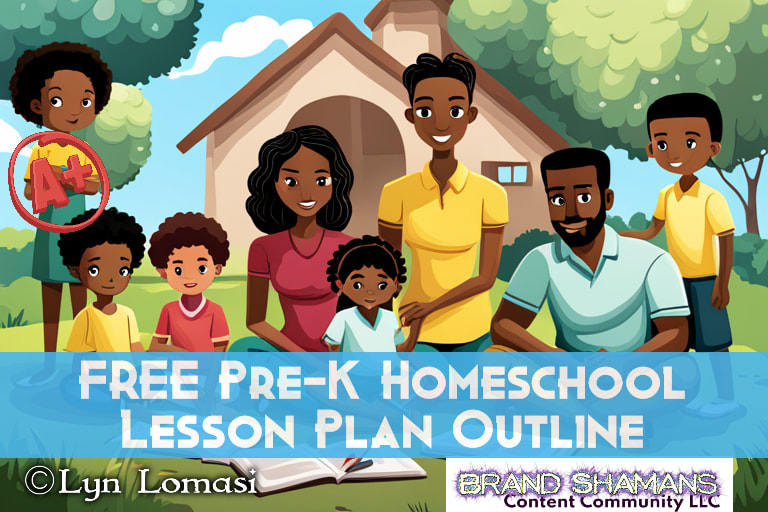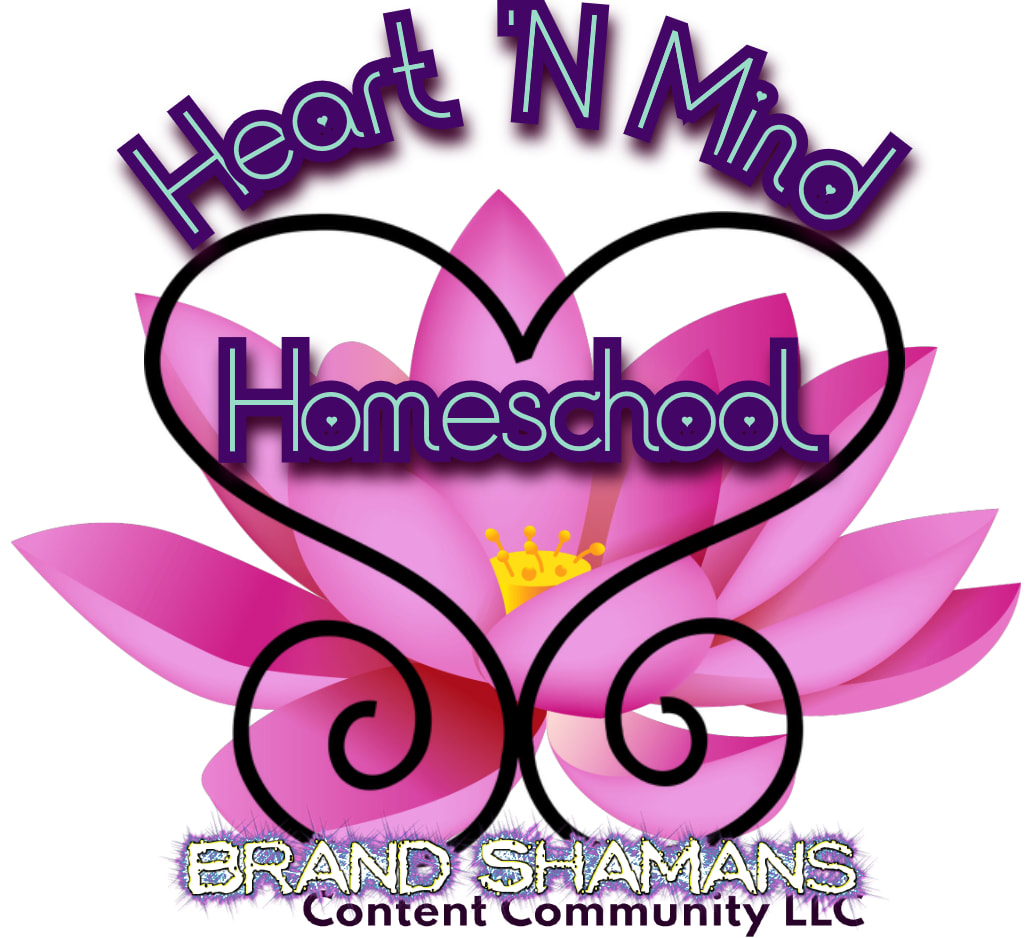|
This is an amazing time for those hungry for wisdom and knowledge. We live in an era where education knows no bounds and can venture into the enchanting realm of the mystical and all-encompassing. Today, we set forth on a game-changing expedition that will spark curiosity, embolden families who educate at home, and foster a profound harmony with the world around us. Within this blog post, we reveal the incredible potential of herbal education, helping families seize control of their own fate and cultivate a new wave of budding herbal experts.
The Holistic Approach: Embracing the Wisdom of Nature At the heart of our mystical journey lies the essence of holistic education. Far beyond textbooks and examinations, holistic learning integrates mind, body, and spirit, harmonizing with the natural rhythms of life. In this paradigm, the knowledge of herbs plays a pivotal role, and it is here that we witness the bloom of herbal education. Holistic herbal education is not merely a lesson on the green wonders that surround us; it is an invitation to align with nature's wisdom, to rekindle a long-lost relationship with the Earth, and to find harmony within ourselves. Teaching our children about herbs offers a profound way to introduce them to the interconnectedness of all life, nurturing a sense of responsibility and reverence for the planet that sustains us. The Enchantment of Herbal Education: Delving into Nature's Apothecary Imagine a world where your children can identify the vibrant petals of a chamomile flower, discern the soothing scent of lavender, or harness the healing powers of aloe vera. Herbal education transforms the ordinary into the extraordinary, unlocking a magical apothecary that lies within the embrace of Mother Nature. By teaching kids about herbs, we ignite their innate curiosity and equip them with an arsenal of knowledge to nurture their well-being naturally. The garden becomes their classroom, and the plants, their mentors. They learn to recognize the healing properties of herbs, understand how to prepare potent remedies, and appreciate the art of harnessing nature's gifts to promote health and vitality. Empowering Kids: A Journey of Self-Discovery and Healing As parents and educators, our primary mission is to empower our children to become architects of their destinies. With herbal education as our ally, we gift them the ability to care for themselves and others, a profound act of self-empowerment. In teaching kids about herbs, we witness the blossoming of self-confidence and resilience. They become aware that they have the power to heal, the capacity to solve problems, and the wisdom to take control of their own well-being. As they experience the magical transformation of herbs, they also embrace the enchanting journey of self-discovery. Unleashing the Alchemist Within: Blending Science with Magic Herbal education is a harmonious blend of science and magic, where the alchemist within each child awakens. As they learn about the chemical compounds that lend herbs their healing prowess, they also embrace the intangible magic that cannot be confined by equations. In the garden, they experiment with combinations of herbs, witnessing the sparks of alchemy as they create herbal concoctions. They brew potions of relaxation, courage, and clarity, all the while instilling a profound sense of responsibility for the gifts bestowed upon them by the Earth. The Knowledge to Mend: Healing the Earth and Beyond As our young herbalists grow in wisdom and understanding, they recognize the potent role they play in healing not only themselves but also the planet. They grasp that the connection to nature extends beyond the garden fence, and that the choices they make impact the delicate balance of the Earth. Armed with the knowledge of herbs and their ecological significance, our budding herbalists turn into eco-conscious warriors, guardians of the planet. They advocate for sustainable practices, protect endangered plant species, and embark on a quest to heal the Earth one seedling at a time.
Together, we hold the key to a future where children grow into holistic beings, grounded in wisdom, and shining with the light of self-awareness. Let us embark on this transformative journey, knowing that the destiny of our children and the Earth lies in our hands. The time is now, and the magic awaits.
Don’t be afraid of the unknown, for it is the canvas on which we paint the tapestry of our lives. Embrace the enchantment, ignite the spark of curiosity, and embark on a journey that will change the course of history. Empower your children, empower yourself, and empower the world through the magic of herbal education in your homeschooling journey!
0 Comments
Enjoy a comprehensive Kindergarten homeschooling journey with our month-by-month lesson plan outline! From language arts to math, science to art, explore a diverse curriculum designed to foster holistic growth and learning in your child.
Month 1: Introduction to Kindergarten Learning Language Arts:
Language Arts:
Language Arts:
Language Arts:
Language Arts:
Language Arts:
Language Arts:
Language Arts:
Language Arts:
Language Arts:
Language Arts:
Language Arts:
Here is a 12 month homeschool lesson plan outline for pre-k (preschool) aged learners. This lesson plan includes a week by week and month by month format and is designed to give parents a reference point when planning daily lessons and activities. You may also choose to write an entire curriculum, using this as your guide. This lesson plan is not intended to be used for commercial purposes. You may use it for personal reasons in order to homeschool your children. Teachers may also utilize this in traditional schools if permitted.
Month 1: Introduction to Learning Week 1: All About Me
Month 2: Exploring Our World Week 1: Transportation
Week 2: Countries and Cultures
Week 3: Land, Water, and Air
Week 4: Our Community
Month 3: Early Literacy and Numeracy Week 1: Letters E-H
Week 2: Rhyming Words
Week 3: Numbers 6-10
Week 4: Story Time and Imagination
Month 4: Exploring Nature and Animals Week 1: Outdoor Adventures
Month 5: Creative Exploration Week 1: Colors and Emotions
Month 6: Nature and Seasons Week 1: Springtime
Month 7: Exploring Science and the World Week 1: Outer Space
Month 8: Exploring Our World Further Week 1: Farms and Animals
Month 9: Creative Arts and Expression Week 1: Music and Rhythm
Month 10: Our Amazing World Week 1: Exploring Habitats
Month 11: People and Their Jobs Week 1: Community Helpers
Month 12: Reflecting and Looking Ahead Week 1: Looking Back
Here is a 12 month homeschool lesson plan outline for pre-k (preschool) aged learners. This lesson plan includes a week by week and month by month format and is designed to give parents a reference point when planning daily lessons and activities. You may also choose to write an entire curriculum, using this as your guide. This lesson plan is not intended to be used for commercial purposes. You may use it for personal reasons in order to homeschool your children. Teachers may also utilize this in traditional schools if permitted. In a world of limitless possibility, homeschooling offers the magical opportunity to nurture young entrepreneurial minds. Beyond conventional learning, we have the power to shape our children's destinies and instill an entrepreneurial spirit within them. By blending spirituality and success, we can create a homeschooling experience that empowers our kids to recognize their inner wizardry and craft a future of their dreams. Homeschooling kids for entrepreneurship in this magical world is about teaching life skills while embracing your child’s spiritual gifts.
Embracing the Magic of Entrepreneurial Homeschooling "Magic is believing in yourself." - Goethe Homeschooling, by nature, gives us the extraordinary opportunity to impart traditional knowledge of the power our children hold. But it also allows us to ignite the flames of entrepreneurial spirit within our children. Without the barriers that exist within organized learning, we can equip our young apprentices with the essential tools and skills required to not only navigate, but flourish in this ever-evolving world. Unleashing Entrepreneurial Minds: Crafting Dreams into Reality Imagination is the wand that sparks innovation into the world of entrepreneurship. Encourage your children to dream big and embrace their wildest ideas. Together, you can craft these visions into tangible plans. Teach your kids the courage to take risks and venture into the unknown. Like brave explorers, young entrepreneurs need to be daring, turning their ideas into reality. In the realm of entrepreneurship, failure is but a stepping stone to success. Encourage your kids to see setbacks as opportunities to learn, grow, and refine their magical craft. The Magical Curriculum: Spells for Entrepreneurial Success Encourage creative pursuits in arts, crafts, and storytelling. These magical potions will nurture your children's creativity, allowing them to think outside the box when approaching business ventures. Teach the art of salesmanship to your young wizards. Whether it's selling lemonade or handmade crafts, the art of persuasion and negotiation is a magical skill that transcends time. Introduce your children to the world of finance. Teach them the magic of budgeting, saving, and investing, empowering them to take charge of their financial resources. Help your kids master the potion of communication. Effective communication is the key to building meaningful connections and partnerships in the entrepreneurial realm. Crafting a Magical Homeschooling Environment "Education is not the filling of a pail, but the lighting of a fire." - William Butler Yeats As homeschooling parents, we have the power to create a magical environment that fosters the entrepreneurial spirit in our children. Discover your child's passions and align their education with these magical sparks. When kids are passionate about what they learn, their journey towards entrepreneurial success becomes an exciting adventure. In the magical realm of entrepreneurship, curiosity is the key to unlocking new possibilities. Encourage your kids to ask questions, explore different paths, and be lifelong learners.Help your children view failure not as a defeat, but as an essential ingredient in their magical journey towards success. Share stories of famous entrepreneurs who faced failures but rose to greatness through perseverance. Mindfulness as a Superpower Integrate mindfulness practices into your homeschooling routine. Meditation and mindfulness exercises enhance focus and emotional intelligence, enabling young wizards to navigate challenges with clarity and composure. "The greatest discovery of all time is that a person can change their future by merely changing their attitude." - Oprah Winfrey As parents, we can instill an entrepreneurial mindset in our children, empowering them to claim their own destinies. Teach your kids that their abilities and intelligence can grow with effort and perseverance. The belief in their own potential will empower them to face challenges with confidence. Exemplify a positive and optimistic outlook in your own life. Children absorb the energy of those around them, and a positive attitude is contagious. Encourage your kids to set specific goals and visualize their success. This practice helps them stay focused and empowers them to work towards their dreams with determination. Gratitude is a powerful potion that attracts abundance. Encourage your children to practice gratitude daily, nurturing a sense of appreciation for the magical world around them. In Conclusion: Unleashing the Wizards of Tomorrow Homeschooling provides a magical canvas to mold young minds into visionary entrepreneurs. As we integrate spirituality and success into the curriculum, we empower our kids to take charge of their destinies fearlessly. Embrace the wonders of imagination, nurture their entrepreneurial passions, and infuse the journey with mindfulness. Together, we will summon a generation of young wizards ready to conquer the world with their wisdom, confidence, and entrepreneurial prowess. Note: The content of this blog post is for informational purposes only. As with any educational endeavor, it's essential to adapt your approach based on your child's individual needs and interests.
|
Heart 'N Mind Homeschool
Archives
June 2024
Categories
All
|
- Brand Shamans
- Brand Healing
- Inner Healing
-
INTENT-SIVE NATURE
- Content & Brand Elevation
- Healing Jewelry & Talismans
- Bath, Beauty, & Self-Care
- Healing Sessions
- Rituals, Herbs, & Altar Supplies
- Gawwwdess Baby Boutique
- Soul Flame Gifts
- Yoga & Meditation
- Books & Media
- Education & Homeschool Resources
- Home, RV, & Decor
- Clothing
- Pets
- Custom Orders
- Monthly Subscription Boxes
- October Festivals
- FLOW-Key Parenting
- About & Contact
- RV, Nature, & Travel Shamans
- Souls Within
- Life & Home
- Heart 'N Mind Homeschool
- The Homeschooling Mommy
- Books & Authors
- Speak Up!
- Pawsitive Pet Parenting
- Manifesterz
- Gifts In Minutes
- Brand Shamans
- Brand Healing
- Inner Healing
-
INTENT-SIVE NATURE
- Content & Brand Elevation
- Healing Jewelry & Talismans
- Bath, Beauty, & Self-Care
- Healing Sessions
- Rituals, Herbs, & Altar Supplies
- Gawwwdess Baby Boutique
- Soul Flame Gifts
- Yoga & Meditation
- Books & Media
- Education & Homeschool Resources
- Home, RV, & Decor
- Clothing
- Pets
- Custom Orders
- Monthly Subscription Boxes
- October Festivals
- FLOW-Key Parenting
- About & Contact
- RV, Nature, & Travel Shamans
- Souls Within
- Life & Home
- Heart 'N Mind Homeschool
- The Homeschooling Mommy
- Books & Authors
- Speak Up!
- Pawsitive Pet Parenting
- Manifesterz
- Gifts In Minutes






 RSS Feed
RSS Feed




